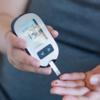The New Stem Cell Treatment that May Finally Cure Diabetes

Diabetes happens to be one of the most common diseases in the world, and it can hit anyone regardless of gender and age. In fact, cases of diabetes spiked in America just last year. The World Health Organization predicts that the number of people who have diabetes will increase twice as much by the year 2030. With it affecting more than 300 million people around the world, the World Health Organization does not see the numbers dropping anytime soon.
Having diabetes takes an enormous toll not only on the physical health of a person but also on the emotional health and the financial aspect as well. Diabetes also happens to be the main cause of other conditions such as kidney failure, heart diseases, strokes, and even blindness. While there have been many attempts to cure diabetes, the only way to handle diabetes so far would be to really just manage it. Fortunately, there have been efforts to use skin cells to produce insulin for the body.
What Diabetes Is and How it Affects People
To further appreciate this method, it’s very important to know beforehand how exactly diabetes works and how it affects the human body. Basically, the main cause of diabetes would be the lack or total absence of insulin in the body.
Insulin plays a very important role in the body as it is used to balance out your blood sugar and regulate your excess glucose so that it can be stored in the liver to be used as energy. If your pancreas does not produce enough insulin for your body, then you will end up with an imbalance blood sugar level which could actually lead to a lot of health complications. This is what makes having diabetes very dangerous.
There are two types of diabetes that one can develop. There are the Type 1 diabetes and the Type 2 diabetes.
- Type 1 Diabetes: The first type of diabetes is known as juvenile onset diabetes and is the more common of the two kinds. For the type 1 diabetes, it is more of an autoimmune disease wherein the immune system automatically eliminates the cells that provide the body with insulin. When this happens, your body will have no way of providing itself with the needed insulin. Once your body stops producing insulin, then the cells will not be able to regulate glucose and turn it into energy. This would result in some of the conditions mentioned above.
- Type 2 Diabetes: The second type of diabetes is the type 2 diabetes or the adult onset diabetes. This type of diabetes is more commonly found in adults although some children were said to have acquired it. For people with type 2 diabetes, the pancreas is already not able to produce sufficient insulin for the body. This is known as insulin deficiency.
Insulin Therapy in Treating Diabetes
For those who are suffering from diabetes, the most common method would be the insulin therapy. More often than not, those with mild diabetes can treat the condition by keeping the blood sugar levels low. However, when this does not work anymore, you may need insulin therapy. For this sort of treatment, you first need to know about the several types of insulin available in the market. There are insulin types that can control blood sugar quickly while there are those that take it slow. The type you will get depends on your doctor’s prescription.
For insulin therapy, the insulin is usually injected into the body through syringes or injection pens. If you need a double dose of insulin, then insulin pumps may be used in order for you to have a continuous flow of insulin in the body. The insulin therapy program will all depend on your body, your individual condition, and what the doctor has diagnosed.
Using Skin Cells as Insulin
In one of the latest efforts to find a more effective treatment for diabetes, researchers from Norway are close to perfecting a method of insulin treatment that works very well with diabetes. The research makes use of skin cells that naturally produce insulin. They aim to use these cells in order to help the patients to infuse more insulin producing cells into their bodies so that the body will have its own natural source of insulin.
The researchers of the University of Bergen have spearheaded this effort, and they have been using skin puncture cells that come from existing diabetes patients. They have then turned these skin cells into insulin producing cells with the aid of modern stem cell methods. From there, the researchers will plant these stem cells into the epidermal area of the skin of the diabetic patients. When this happens, the skin cells will be the ones to produce the insulin for the body. The leader of the research team for this effort is professor Helge Raeder from the K.G. Jebsen Center for Diabetes Research in the University of Bergen. He is the leader of the stem cell node used for this project.
This project is aimed at replacing the traditional insulin injections and blood sugar control medicines with a more effective stem cell therapy-based treatment. These insulin producing cells can work better for patients in the long run. This is because the insulin producing cells that were injected to the body can produce insulin on its own and can act as the main source of insulin. This way, diabetic patients don’t need to be very dependent on insulin shots or blood glucose regulators. One can actually argue that this can be a way to cure diabetes as a whole instead of trying to simply maintain it.
Probably the biggest challenge here is to ensure that the effects are continuous. There are currently many scientists working deliberately to create this artificial insulin producing cells. Researchers are actually racing to be the first one to commercially produce and distribute this new treatment. If this project proves to be a success, then we are actually a step closer to having found an actual cure for the disease in itself.
Conclusion
While there have been efforts made to create ways on how to maintain diabetes, it has been a challenge to find a long term method of medical treatment wherein the patients will not have to rely so much on preventive medication. Although insulin shots and blood glucose regulators have been the two most widely used methods of treatment as they are also the most effective, a long term solution has never been created until now.
When asked about this project, Professor Helge Raeder stated that the study is an attempt to discover stand-in cells that produce insulin in the body. This means that the project aims to replace the body’s deficiency by creating somewhat of a substitute for what the body doesn’t have at the moment with the use of stem cells. When this effort is finally finished, and this treatment method is distributed commercially, it will definitely be another breakthrough in the world of medicine in which more diabetic patients can find effective and long term cure for their condition.














